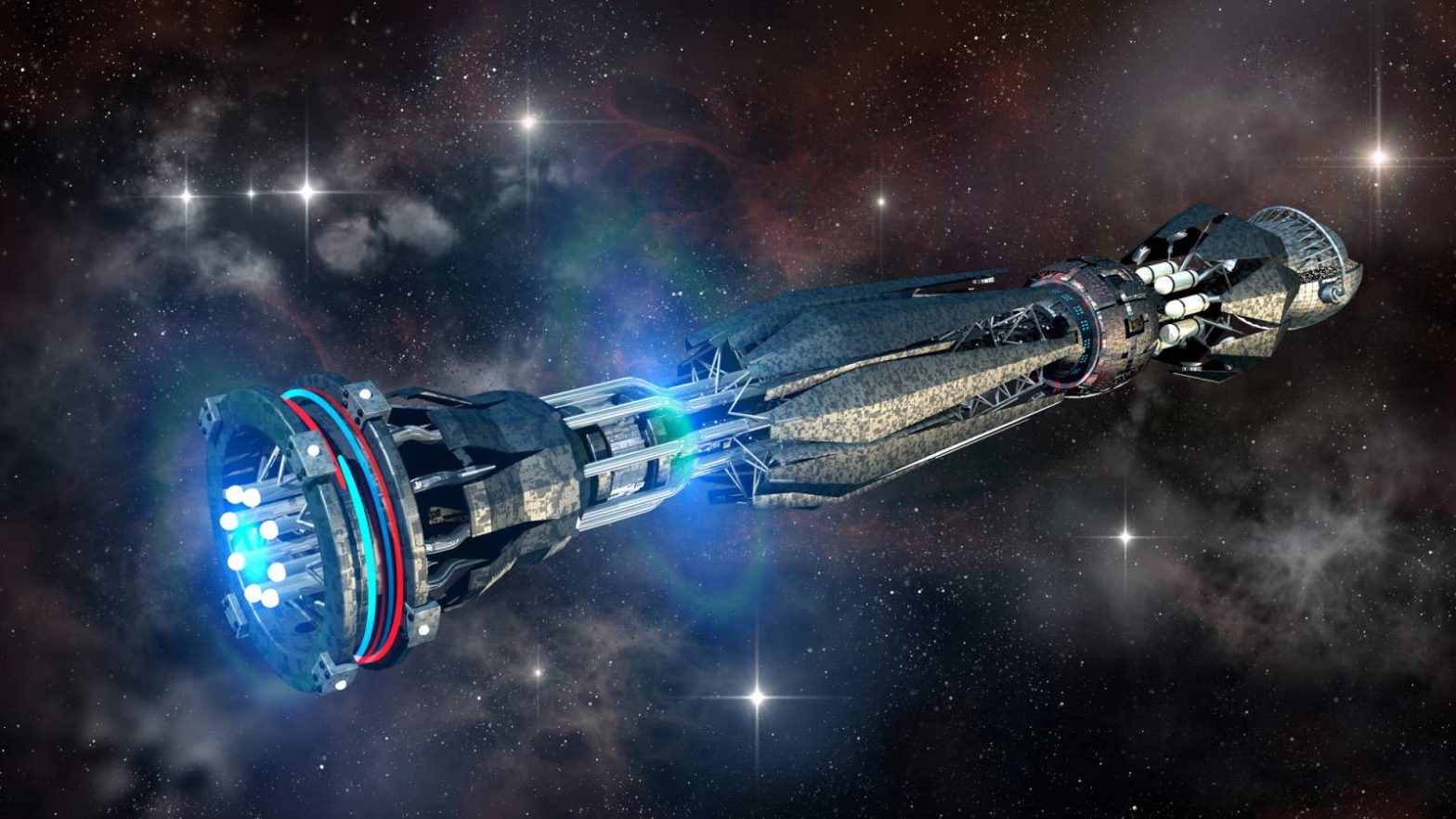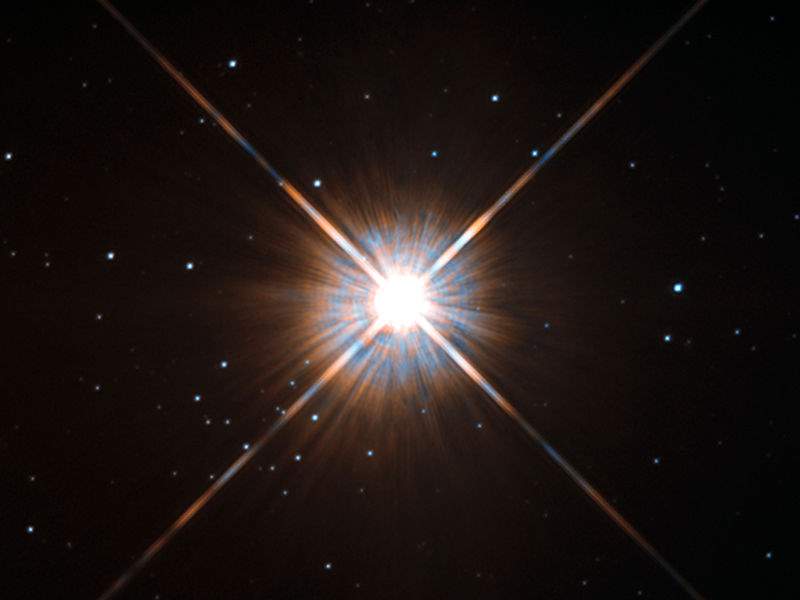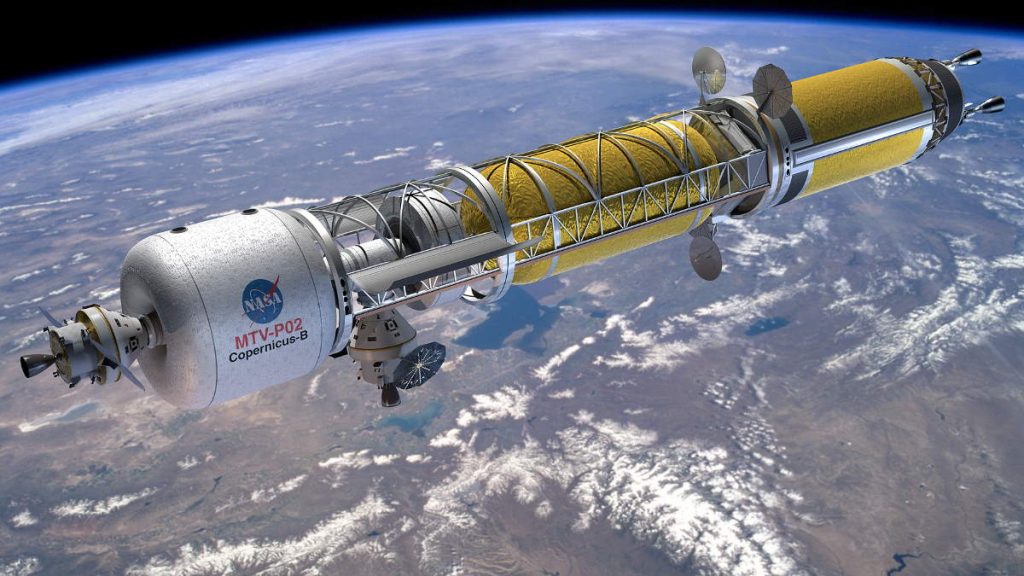Is faster-than-light (FTL) travel possible?
Ever since astronomers found that Earth and the Solar System are not unique in the cosmos, humanity has dreamed of the day when we might explore nearby stars and settle extrasolar planets. Unfortunately, the laws of physics impose strict limitations on how fast things can travel in our Universe, otherwise known as Einstein’s General Theory of Relativity. Per this theory, the speed of light is constant and absolute, and objects approaching it will experience an increase in their inertial mass (thereby requiring more mass to accelerate further).
While no object can ever reach or exceed the speed of light, there may be a loophole that allows for Faster-Than-Light (FTL) travel. It’s known as the Alcubierre Warp Metric, which describes a warp field that contracts spacetime in front of a spacecraft and expands it behind. This would allow the spacecraft to effectively travel faster than the speed of light while not violating Relativity or causality. For more than a decade, Dr. Harold “Sonny” White has been investigating this theory in the hopes of bringing it closer to reality.
Previously, Dr. White pursued the development of an Alcubierre Warp Drive with his colleagues at the Advanced Propulsion Physics Research Laboratory (NASA Eagleworks) at NASA’s Johnson Space Center. In 2020, he began working with engineers and scientists at the Limitless Space Institute, a non-profit organization dedicated to education, outreach, research grants, and the development of advanced propulsion methods – which they hope will culminate in the creation of the first warp drive!
Short film: Go Incredibly Fast
The purpose of this short film is to identify the perennial time-distance problem of human space exploration beyond Mars and to identify a few propulsion approaches we might utilize to send humans to all the worlds in our solar system and reach out across the vast distances between stars.
The spacecraft architectures highlighted in the film are:
- Nuclear electric propulsion (known physics, known engineering)
- Fusion propulsion (known physics, unknown engineering)
- And finally, space warps or faster-than-light (FTL) travel (unknown physics, unknown engineering)
Credits:
- Directed by Erik Wernquist
- Written by Erik Wernquist & Harold “Sonny” White
- Narrated by Harold “Sonny” White
- Music by Cristian Sandquist
- Visuals compositing by Erik Wernquist & Andreas Wicklund
- Titles and Graphics by Erik Wernquist & Mikael Hall
- IXS Enterprise Starship design by Mark Rademaker & Harold “Sonny” White
- IXS Enterprise Starship model by Mark Rademaker
- Other Starship and Spacecraft designs by Erik Wernquist
- Other Starship and Spacecraft models by Erik Wernquist & Svante Segelsson
- Narration and Sound Recording by Fro Cespedes
Faster-than-light (FTL) travel: Warp Fields 101
While the idea of “warp drives” and FTL have been with us for decades, these concepts have overwhelmingly been the stuff of science fiction and pure speculation. It was not until 1994 that an actual proposal was made to explain how FTL could work within the realm of known physics. The credit for this goes to Mexican theoretical physicist Miguel Alcubierre, who proposed what would come to be known as the “Alcubierre Drive” as part of his Ph.D. study at Cardiff University, Wales.
In his research paper, “The warp drive: hyper-fast travel within general relativity,” he offered a possible solution to Einstein’s field equations that considered how a spacecraft could achieve apparent Faster-Than-Light (FTL) travel without violating Relativity. Alcubierre concluded that it was possible, provided a field could be created with a lower energy density than the vacuum of space (aka. negative mass or “exotic matter“).
According to Alcubierre, quantum field theory allows for the existence of regions of spacetime that have negative energy densities. This is known as the Casimir Effect, which describes the attractive force between two surfaces in a vacuum. If a “ring” of negative mass could be created around a spacecraft, spacetime could theoretically be contracted in front of the ship and expanded behind. This would allow the spacecraft to effectively travel faster than the speed of light.
“By a purely local expansion of spacetime behind the spaceship and an opposite contraction in front of it, motion faster than the speed of light as seen by observers outside the disturbed region is possible,” he wrote. “The resulting distortion is reminiscent of the ‘warp drive’ of science fiction. However, just as it happens with wormholes, the exotic matter will be needed in order to generate a distortion of spacetime.”
Dr. White explained the concept to Universe Today via Zoom using an everyday metaphor. Basically, he said, it’s like using (what he refers to as) a “travelator,” those horizontal conveyor belts at major airports:
“Normally, you walk along at about three miles an hour going from one gate to another. But in some locations, you have these horizontal ‘travelators,’ and you step on top of them. So you’re still walking at three miles an hour, but the belt is moving as well. Conceptually speaking, the belt is contracting space in front of you and expanding space behind you, so that it augments your apparent speed. But locally, you’re still going at the same speed.”
This way, an object would not be violating Relativity since it is merely riding a wave generated by the expansion and contraction of local spacetime. This would allow spacecraft to circumvent the problems of time dilation (where time slows down as objects approach the speed of light), the massive increase in inertial mass, and the extreme energy required to keep accelerating. Ah, but there was a snag, and it was a doozy!
According to Alcubierre’s original paper, the amount of negative mass required to achieve a warp field was beyond anything humanity could achieve. However, his work has been revisited in the nearly thirty years since he first proposed it, and some of the strict energy requirements that he outlined have been reconsidered. In essence, revised calculations have shown that the amount of exotic matter required to generate a warp field might be within the realm of possibility.
Dr. White’s own revised take on the Alcubierre Metric came in 2011 while he was preparing to deliver a speech at the first 100 Year Starship symposium, a joint project hosted by NASA and the Defense Advanced Research Projects Agency (DARPA):
“I was asked to give a talk about space works at the inaugural NASA-DARPA 100 Year Starship symposium. I didn’t just want to rehash what I had already talked about in the past, so I went through and did some sensitivity analysis with the field equations. I was looking at what happens when you change some of the input parameters to the preliminary requirement for the phenomena – just because I wanted to have something new to talk about.”
“In the process of that, it became very clear that you could significantly reduce the amount of negative vacuum energy density that’s necessary to make the trick work, non-trivially so. The stuff I published in 11′, 12′, and 13′ – three different conferences back to back- I was able to duplicate the best prediction that had been done prior to that by my colleague.”
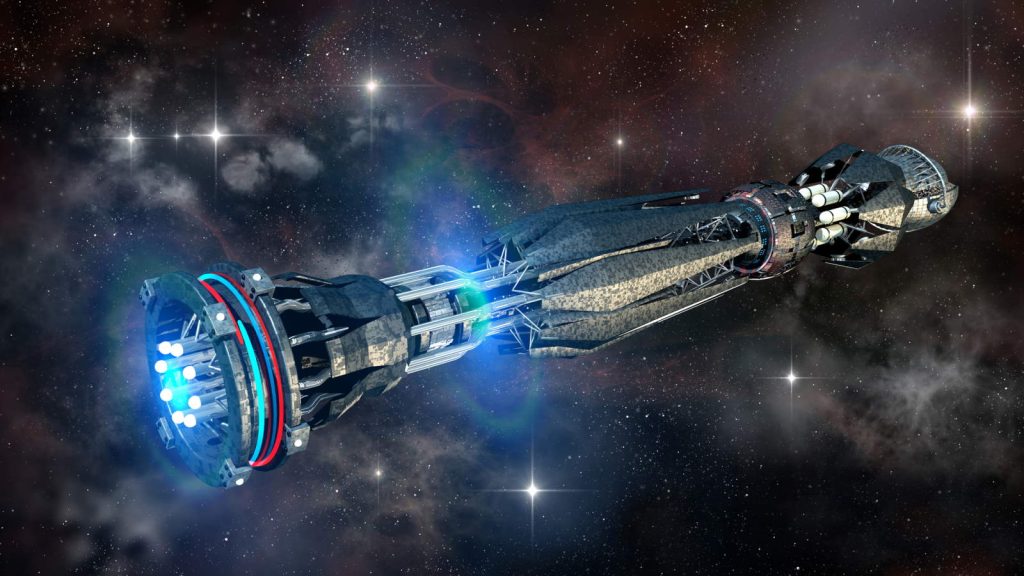
That colleague was none other than astrophysicist Richard Obousy, who co-founded Icarus Interstellar with starship engineer Kevin Long in 2009. In a study released that same year (“Casimir energy and the possibility of higher-dimensional manipulation“), Obousy and co-author Aram Saharian considered how next-generation particle accelerations could produce Standard Model fields that could adjust the density of dark energy locally and change the expansion of spacetime.
Their calculations further indicated that this could be done with a negative vacuum energy density roughly equivalent to the size of Jupiter (1.898×1024 kg; 4.18×1024 lbs). While mathematically possible, this energy requirement is beyond anything we can currently conceive, let alone accomplish! However, Dr. White found that reconsidering the “shell-thickness parameter” of the warp bubble would further reduce that energy requirement.
As he explained, a thicker warp shell would reduce the strain on spacetime, thus allowing a spacecraft to achieve speeds of up to 10 times the speed of light (10 c) using only two metric tons (2.2 U.S. tons) of the exotic matter:
“I went through the process and showed that allowing the shell of the warp bubble to get thicker reduces the magnitude of the York time field. Think of that as the strain that you put on spacetime. And so, by making the warp bubble thicker, you could reduce the magnitude of the York time [field]. And it’s non-linear. And so, by doing that, we were able to reduce the amount of exotic matter from Jupiter down to two metric tons – about the size of the Voyager 1 spacecraft.”
Based on these findings, which were outlined in his seminal paper (“Warp Field Mechanics 101“), Dr. White concluded that an Alcubierre Warp Drive was not just mathematically possible but plausible. As for feasibility, that still requires that scientists find a way to generate negative vacuum energy, which will require a significant breakthrough in physics.
Between 2012 and 2019, Dr. White and his colleagues at NASA investigated the possibility of achieving this breakthrough at NASA Eagleworks, along with other advanced propulsion concepts (like the E.M. Drive). Since then, he has continued to pursue these efforts through the Limitless Space Institute, a non-profit organization dedicated to developing the science and technology that will allow humanity to “Go Incredibly Fast!”
Limitless Space Institute (LSI)
The LSI was founded in 2020 by astronaut Brian K. (B.K.) Kelly, the former Director of Flight Operations at NASA’s Johnson Space Center before retiring in 2019. This non-profit was founded with the vision of advancing human space exploration beyond the Solar System by the end of the 21st century. To this end, the LSI is committed to education and outreach efforts that will inspire the next generation and the research and development of enabling technologies.
To help him realize this vision, Kelly turned to Dr. Harold “Sonny” White, his one-time colleague at the Johnson Space Center. As Dr. White recounted, his involvement with the Institute began in 2019 after his former colleague reached out to him:
“He wanted to talk to me about some education outreach topics. In the process of talking with him, he [asked if I would] potentially leave NASA and come help him stand up and define Limitless Space Institute. After a lot of thought and prayer, it just felt like I could be a little bit more effective at trying to make progress in this domain of advanced power and propulsion. So I made the decision to pull the D-ring at the end of 2019 and join the Limitless Space Institute as the Director of Advanced Research and Development.”
In addition to Kelly and Dr. White, many former astronauts and commercial space heavyweights have joined LSI to realize the goal of interstellar FTL travel. These include its Board of Directors, which consists of such luminaries as Gregory “Ray J” Johnson (Secretary of the Board). Johnson is a retired NASA astronaut who piloted the final Space Shuttle mission (STS-135), which took place on July 8th, 2011, and saw the Space Shuttle Atlantis make its final trip to International Space Station (ISS).
There’s also Kam Ghaffarian (Chairman of the Board), an engineer and entrepreneur who is the co-founder and Executive Chairman of X-energy, Intuitive Machines, Axiom Space, and the CEO of the innovation and investment firm IBX. And then there’s Gwynne Shotwell (Independent Advisor to the Board), whom fans of commercial space will immediately recognize as the President and Chief Operations Officer (COO) of SpaceX, and a member of their Board of Directors.
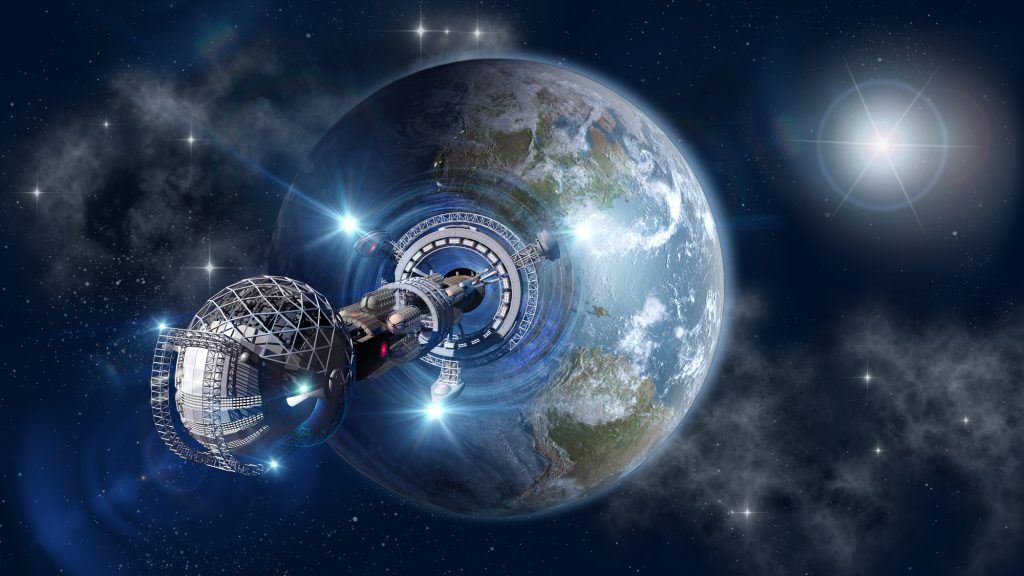
A Three-Step Project
The goal of realizing interstellar spaceflight, said Dr. White, is an extremely tall order and will require some revolutionary breakthroughs:
“When people think of space travel today, they might think of sending human beings back to the surface of the Moon or neat rovers on the surface of Mars doing interesting things. And those are amazing examples of space exploration, but those are all possible using chemical propulsion. If we want to send human beings to the outer Solar System, if we want to get a crew from the Earth to Saturn in 200 days, the amount of energy that’s necessary to make something like that possible is an entire order of magnitude larger than it takes to get a payload from the surface of Earth to Low Earth Orbit.”
Simply put, there’s no way long-distance missions can be done in a reasonable amount of time using chemical propulsion. For that to happen, says Dr. White, we need to think beyond the realm of known physics. To that end, he and his colleagues have adopted a research plan based on three broad categories of theoretical propulsion, each one more advanced than the last. The first (Fission) is dedicated to advancing the technology of Nuclear Electric Propulsion (NEP), which NASA and other space agencies are investigating for their future exploration goals.
This time-honored concept uses nuclear reactors to power Hall-effect thrusters (aka. ion engines) that ionize inert gases (like xenon) to create a charged plasma used to generate propulsion. The benefits of this method include the fact that it is within the realm of known physics and has been validated by past experiments by both NASA and the Soviet space programs. This includes NASA’s Systems for Nuclear Auxiliary Power-10A (SNAP-10A) nuclear satellite, tested in 1965 and flew in space for 43 days.
The Soviets, meanwhile, sent about 40 nuclear-electric satellites into space, the most powerful of which was the TOPAZ-II reactor that produced 10 kilowatts of electricity. There’s also the ground-tested Nuclear Engine for Rocket Vehicle Application (NERVA), a nuclear thermal propulsion (NTP) concept developed by NASA in 1968-69. Compared to NEP, this method uses a nuclear reactor to heat hydrogen propellant and the resulting plasma to generate propulsion. This remains the only concept capable of generating power in the megawatt (MW) range, which is absolutely required for crewed missions.

Solving the time-distance challenge in 3 steps
Step 1: Fission – Nuclear Electric Propulsion (NEP)
- Power: 2-50 MW (1-25 locomotives)
- Enables human exploration of the outer solar system
- Enables interstellar precursors (~1000 AU, see notes 1)
- Travel to Proxima Centauri in thousands of years
- Known physics – known engineering
Step 2: Fusion Electric Propulsion (NEP)
- Power: 50-500 MW (25-250 locomotives)
- Enables faster human exploration of the outer solar system
- Enables slow interstellar
- Travel to Proxima Centauri in hundreds of years
- Known physics – unknown engineering
Step 3: Breakthrough: Spacedrives, Wormholes, Space Warps
Faster-than-light (FTL) travel.
- Power: >500 MW (>250 locomotives)
- Enables super-fast human exploration of the outer solar system
- Enables fast interstellar
- Travel to Proxima Centauri in a fraction of a human lifetime
- Unknown physics – unknown engineering
Specifically, Dr. White and his team are working towards a NEP engine that could generate 2-50 MW power that would allow for rapid transit to Saturn and other locations in the outer Solar System – about ~1,000 AU (149.6 billion km; 92.9 billion mi) from our Sun. However, these NEP spacecraft would still take a few thousand years to get to Proxima Centauri. Going faster, said Dr. White, requires pushing beyond fission and moving “a little bit into the unknown.”
This is where the next step in LSI’s comes into play (Fusion), which calls for the development of fusion electric propulsion (FEP) – which is in the 50 to 500 MW range. As Dr. White described it:
“[I]nstead of fission and uranium, we’re using deuterium and tritium or some combination of gases that we could fuse of very high temperatures when they’re in the form of a plasma. Fusion propulsion is a little more capable than nuclear-electric propulsion. The one caveat is [that] we don’t have fusion reactors all over the planet. So the engineering of a fusion reactor, we still have to work that out. But that may actually be a little closer than most people think.”
“But fusion propulsion would enable us to send large payloads to Proxima Centauri in 100 years. Maybe less, if you want to get aggressive with the delta-v (acceleration). But if we want to do an interstellar mission to Proxima Centauri, and we want to get there in 20 years or less, that’s where we have to look to the frontiers of physics – move firmly into the unknown.”
This is where the third step (Breakthrough) comes into play, where significant progress needs to be made in our understanding of physics. This step requires that we find an answer to how the four fundamental forces that govern the Universe fit together. This includes Relativity, which describes how gravity governs interactions on a large scale, and quantum mechanics, which describes how matter behaves on the smallest scales (the atomic and subatomic levels).
Basically, we need a Theory of Everything (or a theory of “quantum gravity”), which has eluded scientists for about a century. This is why Dr. White and LSI are taking an incremental approach that includes future innovations and discoveries. These may be coming sooner than expected, said Dr. White, due to the introduction of artificial intelligence, machine learning, and advanced computing. In the meantime, there’s plenty of research to be done that’s within the realm of known physics.
Progress to date
With Limitless Space, Dr. White and his colleagues are currently studying custom Casimir cavities, which consist of two plates in a vacuum chamber with pillars in between. These tests aim to measure how the quantum vacuum responds to the shapes inside these cavities, and the predicted characteristics of these cavities could be measured. Recently, Dr. White and his team performed work for DARPA, where these custom cavities were used to explore the possible existence of a vacuum polarization field.
But in the process of looking at how the vacuum responds to these shapes, he and his team noticed something completely unexpected:
“The custom Casimir cavities consist of two plates, and in between the two plates, we have pillars. When we were looking at how the models we have predicted how the quantum vacuum responds to those pillar-plate geometries – when we looked at a two-dimensional section cut of the vacuum energy distribution, it looked like a two-dimensional section cut of the energy density distribution needed for the Alcubierre Warp Metric.”
The one provision to this quantitative similarity was that the custom Casimir cavities had these lenticular energy distributions prismatic in shape. In contrast, the Alcubierre Warp Metric requires this toroidal ring of negative vacuum energy density. Feeling that they were close, Dr. White and his team chose to implement a different approach.
“So we looked at creating a mathematical model where it consisted of a one-micron diameter sphere centered inside a four-micron diameter cylinder,” he said. “We looked at how the quantum vacuum would respond to such a nanostructure’s shape, and that nanostructure is predicted to manifest a negative vacuum energy density that would meet the Alcubierre Warp Metric.”
These numerical analysis results were presented in a paper published in the European Physics Journal C – (EPJ C) in 2021. This paper indicated to the general public that an object built with a specific geometry would manifest a nanoscale warp bubble. While this is a far cry from spacecraft capable of FTL travel, it is a significant precedent and a step in that direction. According to Dr. White, the next step is to create an experiment for measuring any optical properties that this apparatus could manifest.
As always, the work continues. Step-by-step!
Education, Outreach, Grants & Partnerships
Another important aspect of LSI is its partnerships with other scientific organizations and educational institutions. In particular, LSI continues to conduct research and development in the Eagleworks laboratory facilities to explore the dynamic vacuum model. The LSI is also in partnership with Texas A&M and the Massachusetts Institute of Technology (MIT), who lend their nanomanufacturing capabilities to make the devices LSI uses in their lab experiments.
In addition, the Institute started a grant program designed to foster scientific research that could lead to major breakthroughs. This program is overseen by the Interstellar Initiatives (I2) grants program, which awards universities and organizations worldwide for theoretical work (tactical grant) and empirical work (strategic grant) that helps advance space exploration. The program conducted its first biannual round of grants and awards in 2020. This year, said Dr. White, the Institute will be expanding its focus:
“This year, we’re doing our second biannual grant cycle and we’re augmenting the original call to also fund graduate and postdoc fellowships. So that’s a new addition to the 2022-2024 cycle. We have LSI scholarships, where we give undergraduate students scholarships. We have a program called LSI Lab Boosters. That is a program that we started to address K-12 so that’s where we provide small seed awards of 3 to 7k to worthy organizations that work with kids in elementary, middle school, and high school. We also have classes, we commissioned the Institute for Interstellar Studies (I4IS) to do a week-long summer class.”
This video is a preview of the presentation titled, Visions of our Interstellar Future, which is a brief preview of one of the topics in the course; “Human Exploration of the Far Solar System and on to the Stars”. The course is being developed by i4is (initiative for interstellar studies) for the Limitless Space Institute. which is due to take place from 26 – 30 July 2021. Full details and registration information can be found at the end of the preview video. Speaker: John Davies.
The focus of last year’s summer class was “Human Exploration of the Far Solar System and on to the Stars,” which provided an overview of the spacecraft systems and technology needed for interstellar flight (with an emphasis on power and propulsion). This summer, the Institute will be holding a series of online events with featured guests that address a wide range of topics, from space medicine and diversity in the space industry to coding and languages.
They also partner with universities to fund research, including their current partnership with the Texas A&Ms nuclear engineering department to conduct a detailed white paper study on a portable nuclear reactor that meets the program requirements of Project Pele. This is a program by the U.S. Department of Defense (DoD) to create microreactors to provide power at forward bases for a growing fleet of electrical vessels.
Another interesting example is the support LSI has given to its sister institution, Breakthrough Starshot, which is currently investigating directed-energy propulsion (DEP) to accelerate lightsails to relativistic speeds (a fraction of the speed of light). This research is overseen by Prof. Philip Lubin, head of the Experimental Cosmology Group at U.C. Santa Barbara. This group specializes in directed-energy (laser) technology, with applications ranging from space exploration (NASA’s Starlight program) to planetary defense against asteroids (DE-STAR).
“We awarded Phil Lubin’s group an Interstellar Initiatives grant as part of our inaugural grant cycle of 2020,” said Dr. White. “We paid for some work for him to mature his laser design, have multiple lasers work in cooperation in the field with a cooperative target.” This combination of “inspire, educate, and research” (the three pillars of LSI’s efforts) allows for the mutually-beneficial advancement of technologies and the promotion of future leaders and innovators in the space industry.
Today, many research and non-profit groups are dedicated to making interstellar spaceflight a reality. Examples include Icarus Interstellar, the British Interplanetary Society (BIS), and their spinoff, Tau Zero Foundation. There are also predecessor projects like the previously-mentioned Breakthrough Starshot, which is committed to creating lightsail spacecraft that could reach nearby star systems in our lifetimes and confirm if there are any habitable planets there (and possibly life).
While the aim is to go faster and reach farther, the true purpose is to grow humanity as a species and improve our understanding of life and the cosmos. This will invariably have applications for improving life on Earth, which will emerge far sooner than any FTL concepts. Dr. White, who considers himself a very practical thinker (concerned with “what’s under the hood,” as he put it), still has some philosophical thoughts on how reaching farther out into space will have implications here at home:
“Establishing the capability to send human beings to every destination in the Solar System – think about that. Having an entire Solar System of materials and resources would change the very concept of scarcity. Diamond is rare, but if you have a whole Solar System at your disposal, maybe that changes the definition of what that is. Second, in order to allow and facilitate human beings to go throughout all the destinations in our Solar System, we have to have compact light and very energetic forms of power.”
“As we know from life here on Earth, the quality of life is directly tied to how many watts each citizen has at their disposal. Having that capability will also mean that planet Earth will [be in] a much different position when it comes to generating and utilizing power. In a future where we can ‘Go Incredibly Fast’ – within the context of our Solar System or nearby stars – the argument is still similar. It changes the whole concept of scarcity and prosperity.”
Perhaps the most important aspect of the attempts to realize FTL and interstellar travel is the way it inspires people. Knowing that the science behind it is sound and that humanity could one day realize the dream of interstellar travel (within an individual’s lifetime) brings hope to people today. Amid all the bad news of wars, pandemics, insurrections, and climate change, there are many who believe that human civilization will not survive the 21st century. It’s little wonder why many look to space as the solution and the means to our long-term survival.
And for those who would say “we should fix Earth first,” the idea of FTL and interstellar spaceflight offers a counter-argument. What better way to “fix Earth” than by reducing our impact and dependence on it? If and when the entire Solar System is accessible, and nearby stars can be reached in a matter of years (instead of millennia), humanity will have the means to ensure that Earth and our civilization will survive any calamity.
In the immortal words of Konstantin Tsiolkovsky: “Earth is the cradle of humanity, but one cannot live in a cradle forever.” Nuff said?
Notes
- An Astronomical Unit (AU) is the average distance between Earth and the Sun, which is about 93 million miles or 150 million kilometers. Astronomical units are usually used to measure distances within our Solar System.
Sources and Further Reading
- This article was originally published on Universe Today with the title “The Dream of Faster-than-Light (FTL) Travel: Dr. Harold ‘Sonny’ White and Limitless Space” by Matt Williams.
- Limitless Space
